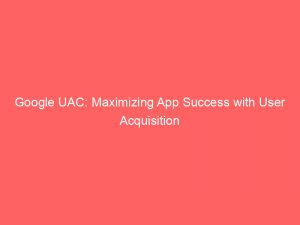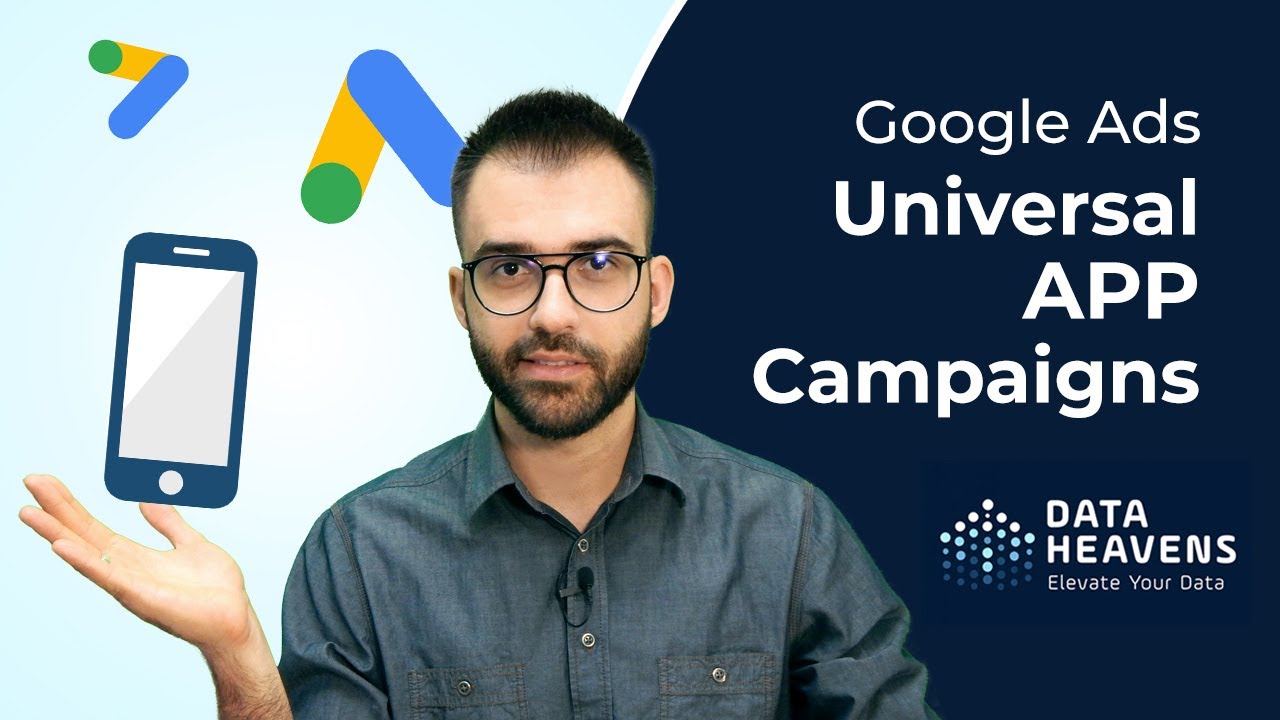- google uac
- 1. App Campaign Subtypes For Promoting Apps Across Google’s Properties
- 2. Platforms Where Ads Can Appear For Google UAC
- 3. Generating Keywords For App Promotion Using Google Ads Methods
- 4. Key Elements That Can Be Included In Google UAC Ads
- 5. Overview Of The Five Types Of Universal App Campaigns (UAC)
- 6. UAC For Installs: Acquiring New Users Through App Installs
- 7. UAC For Installs Advanced: Combining Installs With Driving In-App Actions
- 8. UAC For Actions: Focusing On Users Completing In-App Events
- 9. UAC For Value: Optimizing Towards In-App Events With A Specific Return On Ad Spend Target
In today’s increasingly digital world, capturing the attention of potential appusers has become a top priority for businesses of all sizes. One powerful tool that has emerged in this quest for user engagement is GoogleUAC (Universal App Campaigns).
With its ability to promote apps across various Google platforms, UAC has proven to be a game-changer in driving appinstalls, increasing in-app actions, and re-engaging users. From optimizing for value to incorporating compelling visuals and text ideas, UAC offers a range of strategies to attract new users and maximize app success.
However, as we’ll discover, finding the balance between effectiveness and cost efficiency is not always a simple task. So, let’s dive into the world of Google UAC and explore how it can revolutionize your app marketing efforts.
| Item | Details |
|---|---|
| Topic | Google UAC: Maximizing App Success with User Acquisition |
| Category | Ads |
| Key takeaway | In today's increasingly digital world, capturing the attention of potential app users has become a top priority for businesses of all sizes. |
| Last updated | December 27, 2025 |
google uac
Google UAC, or Universal App Campaigns, is a powerful tool that promotes apps across various platforms within the Google ecosystem. There are three campaign subtypes, namely App installs, App engagement, and App pre-registration.
These campaigns can display ads on Google Search, Google Play, YouTube, and other platforms. To generate keywords for app promotion, Google Ads utilizes methods like Google Play search terms.
Ads for UACs can feature app icons, names, developer names, and text ideas. There are five types of UACs, each with a specific focus.
UAC for Installs aims to acquire new users through app installs, UAC for Installs Advanced combines installs with driving in-app actions, UAC for Actions focuses on users completing in-app events, UAC for Value optimizes towards in-app events with a specific return on ad spend target, and UAC for Re-Engagement allows remarketing to users who have engaged with the app. Efficient budgeting and bidding strategies are crucial for UACs, with daily budgets set based on the desired cost per install or action.
It is important to note that running a UAC on a limited budget may hinder its performance, and while efficiency is important, it does not guarantee cheap costs.Key Points:
- Google UAC is a powerful tool for promoting apps across platforms in the Google ecosystem
- There are three campaign subtypes: App installs, App engagement, and App pre-registration
- UAC campaigns can display ads on Google Search, Google Play, YouTube, and other platforms
- Keywords for app promotion are generated using methods like Google Play search terms
- UAC ads can feature app icons, names, developer names, and text ideas
- There are five types of UACs: UAC for Installs, UAC for Installs Advanced, UAC for Actions, UAC for Value, and UAC for Re-Engagement
Sources
https://www.effectivespend.com/blog/types-of-google-universal-app-campaigns/
https://support.google.com/google-ads/answer/6247380?hl=en
https://www.linkedin.com/pulse/what-google-uac-rahul-todur
https://appradar.com/academy/google-app-campaign
Check this out:
? Pro Tips:
1. Always monitor and optimize your UAC campaign’s budget and bidding strategies to ensure you are maximizing your return on investment.
2. When setting daily budgets for your UAC, consider your desired cost per install or action to ensure you are allocating enough budget for effective results.
3. Avoid running a UAC on a limited budget as it may hinder the campaign’s performance and limit its ability to reach its full potential.
4. Keep in mind that efficiency in UACs does not necessarily guarantee lower costs, so continuously analyze and adjust your campaign to improve cost efficiency.
5. Regularly review and update your UAC ads, including app icons, names, developer names, and text ideas, to keep your campaign fresh and engaging to users.
1. App Campaign Subtypes For Promoting Apps Across Google’s Properties
Google UAC (Universal App Campaign) is a powerful tool for promoting apps across various Google properties. There are three campaign subtypes that advertisers can choose from, depending on their goals:
Fresh tips added for marketers this month.
It is ideal for apps that want to increase user activity, such as active usage, in-app purchases, or subscriptions.
2. Platforms Where Ads Can Appear For Google UAC
Google UAC ads have the potential to reach a vast audience as they can appear on multiple platforms. These platforms include:
3. Generating Keywords For App Promotion Using Google Ads Methods
One of the key aspects of Google UAC is its ability to generate relevant keywords for app promotion using Google Ads methods. These methods include:
4. Key Elements That Can Be Included In Google UAC Ads
Google UAC ads can include several key elements to attract and engage users. These elements include:
5. Overview Of The Five Types Of Universal App Campaigns (UAC)
There are five types of UAC campaigns available, each with a specific focus and objective:
6. UAC For Installs: Acquiring New Users Through App Installs
UAC for Installs is specifically designed to help app developers acquire new users by driving app installs. By targeting relevant audiences and utilizing effective ad creatives, this campaign type can effectively increase an app’s user base.
7. UAC For Installs Advanced: Combining Installs With Driving In-App Actions
UAC for Installs Advanced takes the user acquisition process a step further by combining app installs with driving in-app actions. This campaign type focuses on increasing user engagement and interaction within the app, such as completing a purchase or subscribing to a service.
8. UAC For Actions: Focusing On Users Completing In-App Events
UAC for Actions is ideal for apps that have specific in-app events they want users to complete. This campaign type targets users who are more likely to take action, such as making a purchase or reaching a specific milestone in a game, and encourages them to do so.
9. UAC For Value: Optimizing Towards In-App Events With A Specific Return On Ad Spend Target
UAC for Value is a campaign type that optimizes towards in-app events with a specific return on ad spend target. By setting a specific value goal, advertisers can ensure that their advertising efforts generate a desirable return on investment.
In conclusion, Google UAC provides app developers with a comprehensive solution for user acquisition and app promotion. With its diverse array of campaign subtypes, wide range of platforms, and advanced targeting capabilities, UAC can effectively maximize app success and drive meaningful results.
Programmatic Advertising • Performance Marketing Tips • Self-Serve DSP Platform • Buy Traffic











